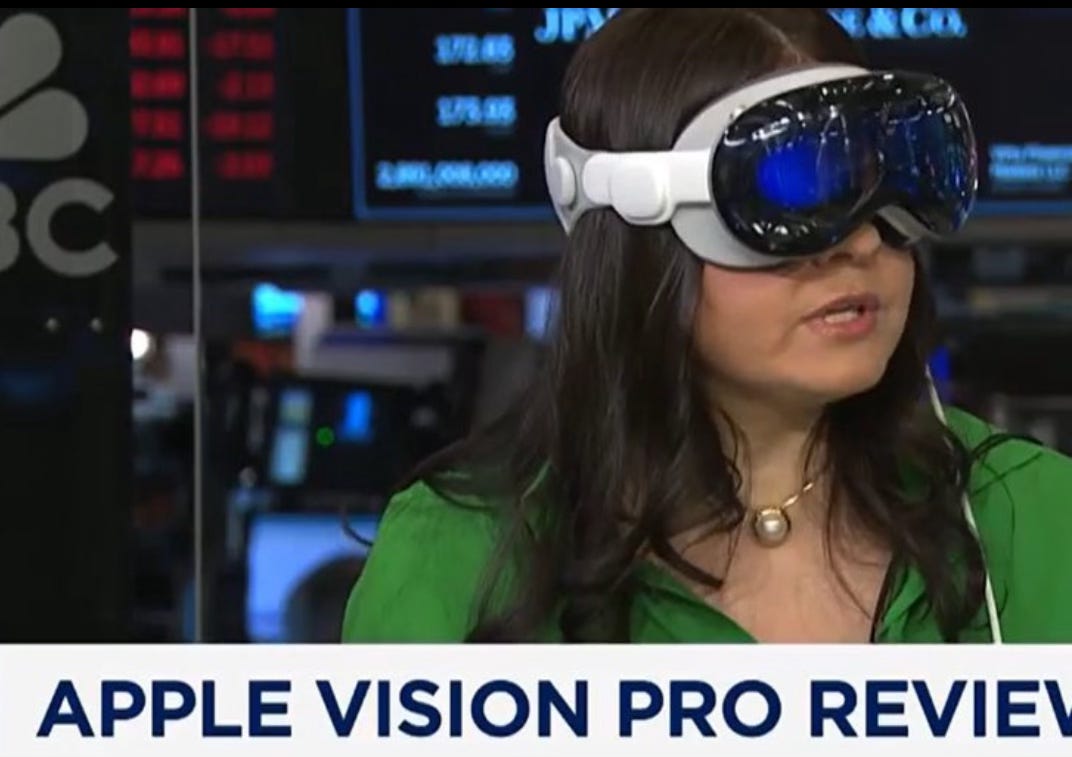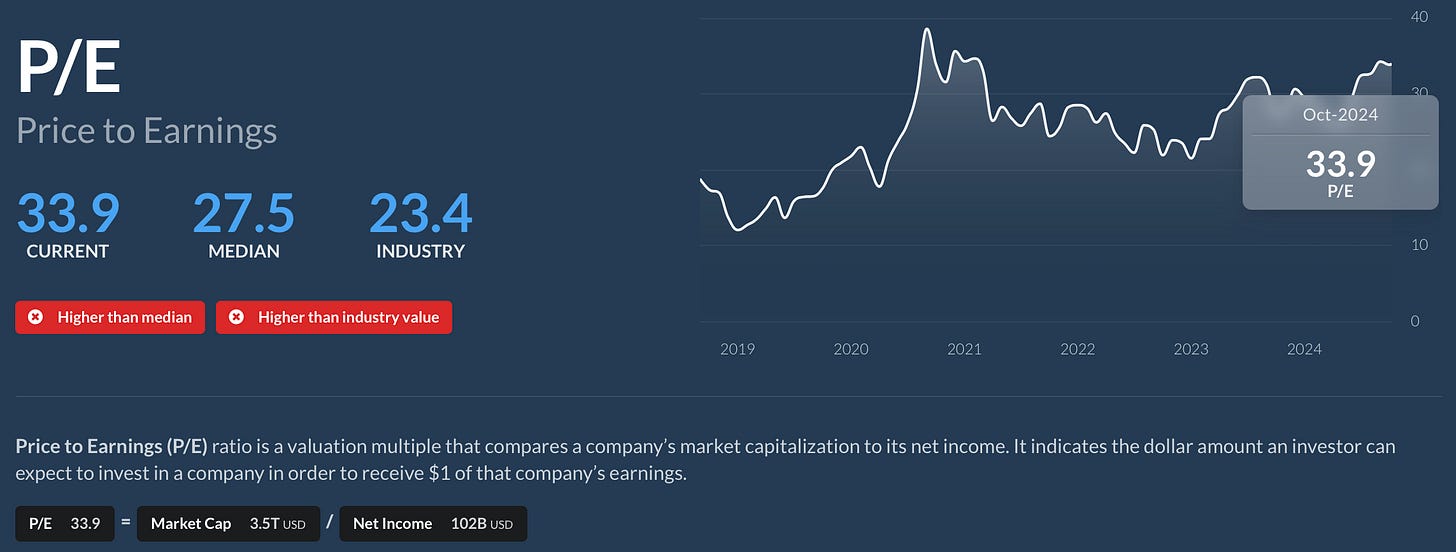Executive Summary
Apple Inc. (AAPL), once the undisputed leader in innovation and growth, is now facing a period of significant overvaluation, product stagnation, and mounting challenges. At its current valuation of $3.4 trillion, Apple has been priced not only as a stable tech giant but as a company expected to sustain double-digit growth despite declining innovation, a maturing product line, and increasing competitive pressures. This report details why Apple’s stock is severely overvalued, with a potential downside of up to -50% from today’s price of $225 (October 7, 2024), as key financial metrics no longer justify its sky-high price. Additionally, Warren Buffett’s significant reduction in his Apple holdings serves as a major red flag for investors who are ignoring fundamental risks.
Apple’s Innovation Problem: No Catalyst for Future Growth
Apple Vision Pro: A Complete Failure
Tim Cook’s first real foray into new product categories as CEO—the Apple Vision Pro—has been a massive disappointment. Despite significant hype, the product’s $3,499 price tag and lack of practical applications have severely limited its market appeal. Analysts project that the Vision Pro will contribute less than $2 billion in revenue in 2024, which is negligible when compared to Apple’s overall revenue of $400 billion. It has already been reported that the company has already scrapped plans for an updated model refresh as demand is near zero.
• Failed Expectations: To put this failure in perspective, the Apple Watch, the last product Apple launched under Cook’s CEO leadership, generated $5 billion in its first year. The failure of Vision Pro underscores Apple’s struggle to create a game-changing product—a hallmark of the company under Steve Jobs.
Project Titan (Apple Car): A $10 Billion Failure
Apple’s ambitious attempt to enter the electric vehicle market through Project Titan has been plagued with delays and setbacks, ultimately leading to the project’s rumored cancellation. Apple invested over $10 billion in its car ambitions, yet has nothing to show for it. The failure of this project is a significant blow, as many investors were banking on the Apple Car being the next major growth driver for the company.
• Missed Opportunity: With the global electric vehicle market valued at over $600 billion, Apple’s failure to capitalize on this opportunity represents a massive strategic misstep. Investors who were counting on Apple to diversify its product line and tap into this lucrative market are now left with no clear path to growth.
Lack of AI Leadership: Siri’s Decline
(Here is a video of Steve Jobs in 1985 talking about the future of computers and AI)
(Apple was an early leader in AI and voice assistant market with Siri. Here is one of Steve Jobs last conversation about Siri being the AI vision he wanted to make.)
Sadly, Steve Jobs passed away in 2011 and was never able to meet his ultimate goal for AI and since, Apple has been outpaced by competitors like Google Assistant, Amazon Alexa, and even OpenAI’s ChatGPT and Microsofts Co-Pilot.
Apple’s failure to innovate in AI is a major concern especially given its head start amongst everyone else, as AI is becoming increasingly critical to the tech industry.
• Lost Competitive Edge: Tim Cook had over a decade to turn Siri into a market leader in AI, yet Apple has fallen behind. With AI driving innovation in multiple industries, this failure could have long-term implications for Apple’s competitiveness.
Valuation Concerns: What Overvaluation Means
The primary indicators of overvaluation in a stock are its Price-to-Earnings (P/E) and Price-to-Sales (P/S) ratios, which are key metrics used by investors to gauge whether a company’s current stock price accurately reflects its financial performance. When these ratios are significantly above the market average, it implies that investors are paying an excessive premium for the company’s expected future growth. In Apple’s case, this growth is not materializing as expected, and investors may soon realize they are overpaying for what is increasingly looking like a stagnant company.
Price-to-Earnings (P/E) Ratio: Why It Matters
Keep reading with a 7-day free trial
Subscribe to The Coastal Journal to keep reading this post and get 7 days of free access to the full post archives.







